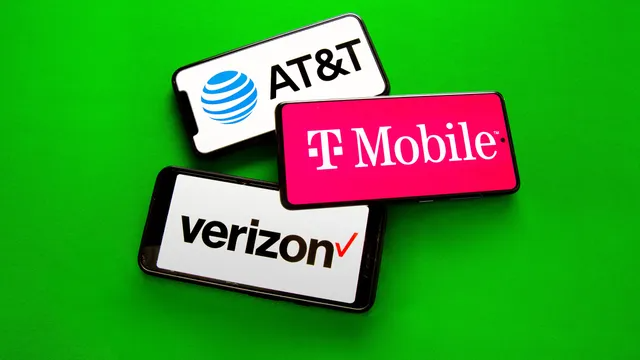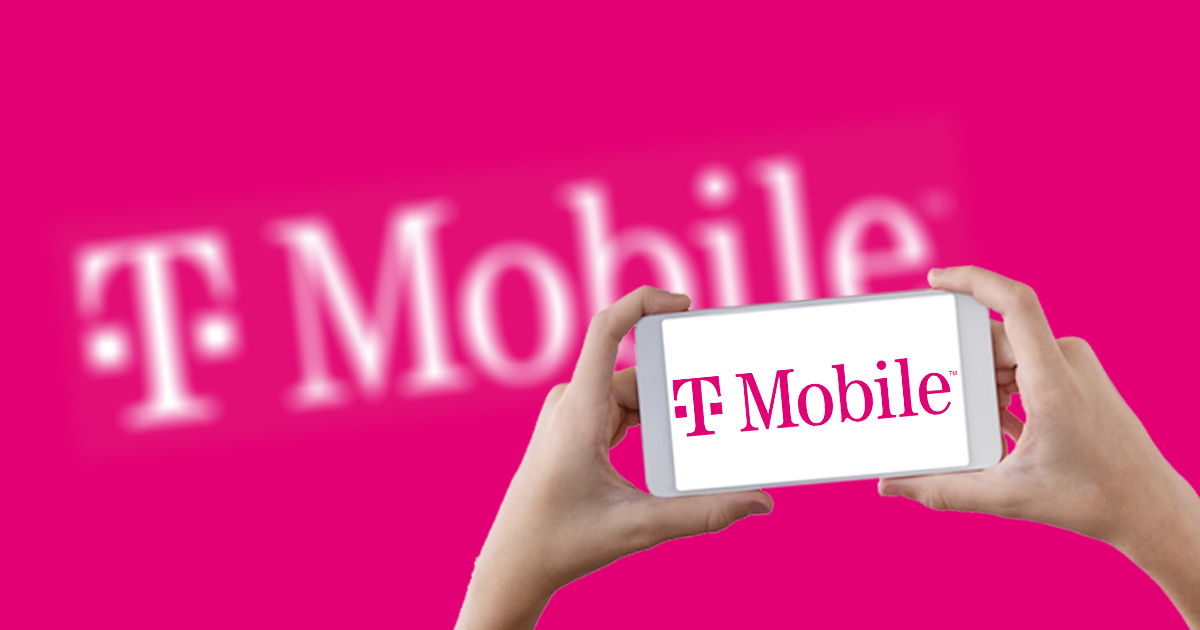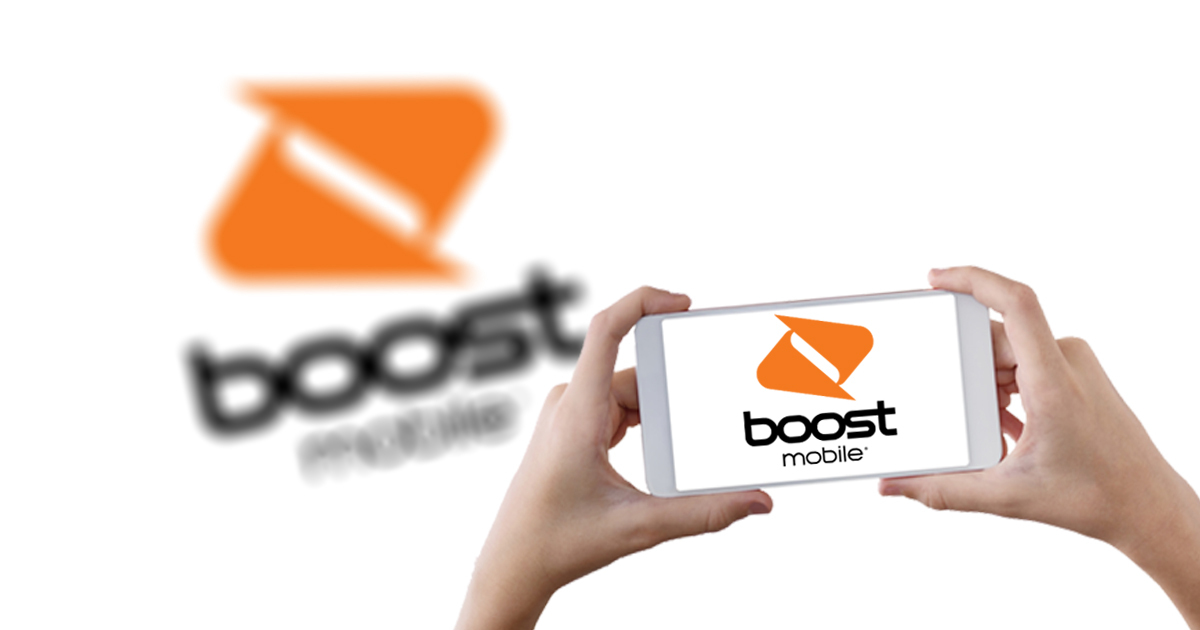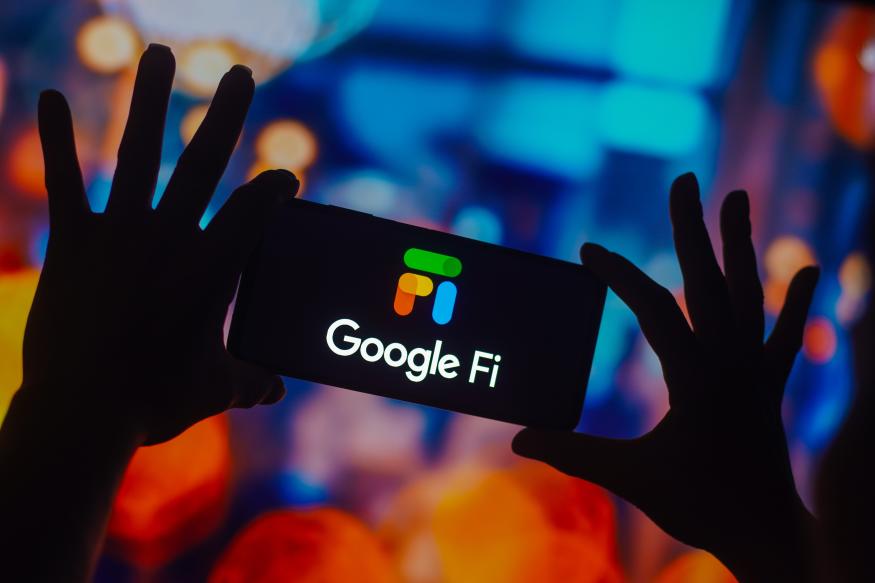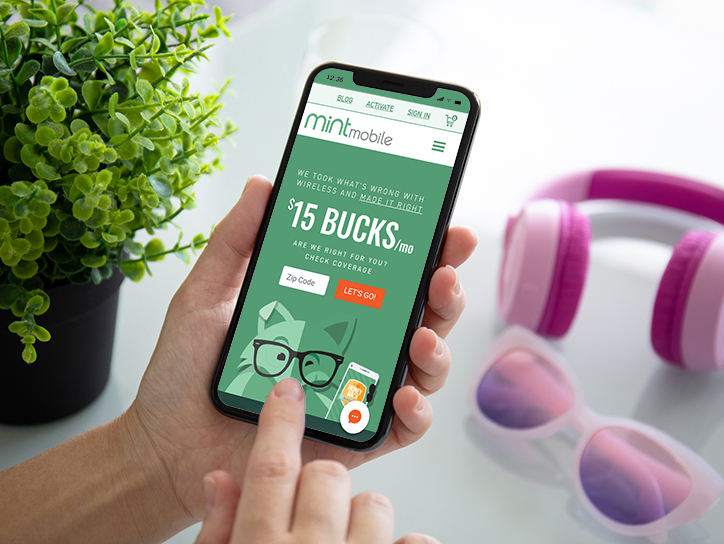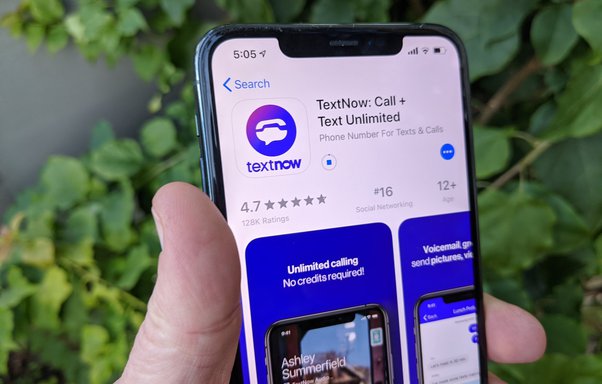A one-stop shop for figuring out which phone plan is best for you.
AT&T, T-Mobile, and Verizon all offer dozens of plans, and prepaid and smaller companies like Mint Mobile, Visible, and Google Fi Wireless offer even more. This makes it hard to choose the best mobile plan. You could end up paying a lot more than you should if you don’t do the right study, and no one wants to miss out on saving money.
We’ll try to make that better. We’ve been talking about the newest wireless plans and providers, including how to move carriers, the best unlimited and prepaid plans, and which networks smaller carriers use. Not to mention the new changes to T-Mobile and Verizon’s plans.
Here’s our guide to help you make sense of all the options and some of what we think are the best unlimited and prepaid plans on the market right now.
How are “prepaid” plans different from “postpaid” plans?
There are two main types of phone plans: regular carriers, like AT&T, Verizon, and T-Mobile, and prepaid providers, like Mint Mobile, Metro by T-Mobile, Google Fi Wireless, and Cricket.
The main difference is that with regular, you pay for your plan after you’ve used your service, while with prepaid, you pay for your allowance before you use it.
Most of the time, prepaid plans are cheaper than postpaid plans, but they often (but not always) offer less in terms of extra streaming features, hotspot data, and savings on devices. To get a trade-in credit of several hundred dollars towards a new iPhone, Pixel, or Galaxy, you usually have to sign up for a postpaid plan with one of the big three companies and agree to stay with that provider for 24 to 36 months.
All three of the biggest wireless carriers offer discounts on plan prices based on age, job, military or veteran status, or if you or someone on your family plan is a nurse, teacher, or first responder. Here, you can learn about AT&T, T-Mobile, and Verizon.
What about the internet?
If you look at a zoomed-out picture of the US on the websites of AT&T, T-Mobile, or Verizon, you’ll probably see that each company’s colour covers most of it. When you zoom in, things get a little more difficult, which is why we can’t say that one carrier is better than another. T-Mobile may have great service in New York, but if you live in a rural area of Colorado, Verizon may be a better choice.
All three, though, offer 5G with service and data speeds that are getting better and better as they roll out the latest wireless technology. It’s possible that you left a network a decade ago because you didn’t like how bad the service was, but now that network is probably better because it’s trying to get more users.
This is also why we suggest talking to friends, family, or coworkers who live in your area but use a different provider, since your mileage may vary depending on where you live. You could also go to a carrier’s store and ask if there are any free ways to try out the service before moving, like T-Mobile’s Network Pass. Verizon now has a similar 30-day programme, and Cricket, which is an AT&T-owned prepaid service, has its own trial programme that lets you try out AT&T’s network.
Smaller companies often use the networks of the bigger ones. AT&T owns Cricket, Verizon owns Tracfone, and T-Mobile owns Metro. There are also smaller options like Mint Mobile, which runs on T-Mobile, Google Fi Wireless, which mostly runs on T-Mobile, and Boost Mobile, which runs on AT&T, T-Mobile, and the 5G networks of parent company Dish. Here, we go into more depth about all of this.
Why choose “unlimited”?
If you have T-Mobile, all of your plans are unlimited, while Verizon no longer lets new customers sign up for a shared data plan. Only AT&T still has tiered internet plans, and they are not very good.
It has a plan with 4GB per line that costs $50 per month for one line and $160 per month for four lines. Each line here gets 4GB of data, but if you use more than that in a month, you’ll have to pay $10 for every 2GB over that limit. AT&T’s plan also doesn’t give you access to its 5G networks.
Even though everyone has different wireless needs, we think that unlimited plans make the most sense for most people, especially when picking a new plan.
AT&T’s basic unlimited plan, called Unlimited Starter, costs $65 a month for one line or $140 a month for four lines. If you have one or two lines and don’t use a lot of data, you might be fine with one of these plans. However, if you only have one line, you should move to AT&T’s $50/month Value Plus plan or T-Mobile’s Essentials Savings plan. This T-Mobile plan costs $80 a month for two lines, which is $10 less than AT&T’s 4GB plan for two lines, and you don’t have to worry about keeping track of how much data you use.
Top postpaid phone plans
Savings with T-Mobile Essentials: $50 for 1 line
The Base Essentials plan from T-Mobile, which offered a single line for $45 per month, was eliminated when the company recently rearranged its plan offerings. It took the place of that choice with the “limited time” Essentials Savings plan, which costs $50 per month for a single line.
You now receive 50GB of high-speed data instead of the 20GB that Base Essentials supplied, and the bandwidth is still unlimited. The duration of the Essentials Savings option from T-Mobile is unknown, but we compare it to the carrier’s plans here.
As before, benefits like complimentary Netflix or the inclusion of taxes and fees in the sticker price are not mentioned. In Mexico and Canada, you can use an unlimited hotspot at “3G speeds” as well as an unlimited amount of call, text, and 2G data.
The Essentials Savings plan and AT&T’s Value Plus plan both cost $50 for a single line, and both could be good choices for people searching for a single line without extras.
Despite the fact that AT&T and T-Mobile’s pricing are currently equal, we favour T-Mobile primarily because it offers hotspot access. The option could be helpful in a pinch, even at “3G speeds.”
It’s also important to note that T-Mobile offers this plan with the option of adding additional lines, with two lines costing $80 a month. (If you require three or more, you might want to have a look at one of T-Mobile’s other plans; they may be less expensive as a result of various deals that the carrier frequently offers.)
On T-Mobile’s website, you might need to select “see more plans” before selecting “explore Essentials Savings plan” to see this choice.
Savings with T-Mobile Essentials: $100 for 4 lines
T-Mobile’s Essentials Savings may also be the most advantageous option for those seeking the most discounts on unlimited service among the big carriers. All of the carrier’s base unlimited plans, including 5G access, feature unlimited talk, text, and data, as was already mentioned.
As the three major carriers deploy the most recent upgrades to their individual 5G networks over the following few years, you may always reconsider your alternatives.
The more lines you add, the more noticeable the savings of T-Mobile’s plan are. Essentials Savings charges $80 per month for two lines, while AT&T or Verizon charge $120 per month for a comparable plan. Due to a promotion, three lines will also cost $90 at T-Mobile as opposed to $120 for Verizon’s Unlimited Welcome and $135 for AT&T’s Unlimited Starter. At T-Mobile, the four-line option costs $100, while it costs $120 at Verizon and $140 at AT&T.
There are a few restrictions on these prices: Taxes and fees are not included in any of these Essentials pricing, in contrast to T-Mobile’s Go5G or Magenta plans, which results in a slightly higher overall cost. You must also set up AutoPay and paperless billing for all of the deals.
Additionally, as previously indicated, you might need to click “see more plans” and then “explore Essentials Savings plan” on the T-Mobile website in order to see this choice.
Verizon Unified Greetings: $75 for 1 line, $130 for 4 lines
This is a little more challenging. The Verizon Play More package, which included the Disney Bundle (ad-free Disney Plus, ESPN Plus, and Hulu with advertisements), as well as other services like Google Play Pass or Apple Arcade, used to be our top choice.
The carrier has since revised its wireless plans to stop including extras like the Disney Bundle, Apple Arcade, and Google Play Pass by default. Although it now has new plans, it is still our choice for the finest benefits; nevertheless, this needs a little more explanation.
You can now select and choose from a range of advantages at a cost of $10 per month instead of having services added automatically. Additionally, it now permits participation for its less expensive plan, known as Unlimited Welcome.
One line of Unlimited Welcome costs $65 each month, while four lines cost $120. You get access to Verizon’s fastest 5G networks (what it terms “5G Ultra Wideband”) but not to hotspot data, even if you get unlimited talk, text, and data. You’ll need to upgrade to its more expensive Unlimited Plus plan ($80 for one line, $180 for four lines) for that.
Perks can be added for that $10 per month price to both the Welcome and Plus plans. This includes the Disney bundle ($15/month on average), Apple One individual ($17/month on average), Apple Music Family ($17/month on average; can be shared by five people), and Walmart Plus ($13/month on average; also includes Paramount Plus Essential).
Other benefits include three days of overseas internet (what the carrier calls TravelPass, normally $10 per day) and an extra 100GB of hotspot data (normally $45 per month), 2TB of Verizon’s cloud storage (normally $15 per month), and more.
All benefits can be enabled or disabled at will, or you can choose not to use them at all. If you chose, you could even choose to have many benefits on a single queue.
However, it can take some time with a spreadsheet to go over which services work for you and how much you’re ready to pay for them to determine whether this makes sense for your scenario. If you pay for some of these services directly, you might save money overall, but it might also cost more than your current plan.
Additionally, it’s important to note that Verizon allows you to “mix and match” lines. As a result, people who don’t want the speedier 5G connectivity can use Unlimited Welcome, while those who do can switch to Unlimited Plus.
Similar features are available with AT&T’s unlimited plans, however the company no longer provides any streaming benefits at this time. Everyone must be on the same plan to benefit from T-Mobile’s benefits.
However, you could have four lines for $120 per month, add the Disney bonus for $10, and pay $130 per month for the entire package if you wanted to save money on one or two services, such as the Disney bundle.
Oh, and to save a little bit more, you can also combine these plans with Verizon’s additional discounts for teachers, nurses, members of the military, and first responders.
One more thing: There are a few oddities with the pricing on Verizon’s website that are worth mentioning. To further complicate matters, if you transfer providers and bring your own phone, the carrier will grant you a credit of $180 per line, spread out over a period of 36 months. Add $5 per month, per line, to their plan cost if you intend to purchase a new device and benefit from their trade-in offers. To save even more money, you could enable paperless billing and Auto Pay.
Top prepaid phone plans
Unlimited service from Boost Mobile for $25 per month
The new unlimited plan from Boost Mobile includes taxes and fees and costs $25 per month for new customers. It includes unlimited call, text, and data. Our previous choice in this position, the 12-month plan from Mint Mobile, does not have this restriction. Boost’s plan does. However, to qualify for this promotion, you must be a new Boost customer.
The package offers 5G connection and 30GB of high-speed data each month (if you use all of that, your data will slow until your next billing month begins). Additionally, hotspot is available, using your high-speed allowance for the data. You must set up automatic payments in order to receive the $25 monthly rate, which is something to keep in mind.
Wireless Google Fi Simply Unlimited
Google’s Fi Wireless cell phone service is a good choice for family plans. Although its $50 price for one line is significantly greater than Mint’s, you can save some money if you have three or more lines.
Simply Unlimited is a plan that costs around $27 per line per month with three lines and reduces to $20 per line per month with four or more lines (both options cost $80 per month total). 35GB of high-speed data as well as voice, text, and data in Canada and Mexico are now included. The plan now includes 5GB of hotspot data as well, however this is a “hard” cap; after using 5GB, the hotspot capability is disabled rather than the data slowing down.
Additionally, Google just made it possible to add free Samsung or Google watches to your plan and enabled 5G compatibility for iPhones.
15GB Mint Mobile Plan
If T-Mobile’s network is reliable in your location, Mint has the greatest deal when it comes to plans with less than 15GB of data. While Boost has a $35 package for 10GB of data and Metro and Cricket charge $40 per month for one line, Mint surpasses them all on price—and now on data, too.
In April, Mint increased its 10GB plan’s monthly data allowance to 15GB of 4G LTE/5G while maintaining the same $20 price (when purchased in 12-month increments). Following that, you can purchase three additional months for $35 per month ($105 in total), six additional months for $25 per month ($150 in total), or an additional year for $20 per month ($240 in total).
It’s also important to note that Mint now has a promotion where you can obtain three months of unlimited data for only $15 per month. Although it doesn’t replace our top selections because it’s a temporary deal, the 15GB plan makes better sense overall — as long as you remember to go back to it after the three months are up. If you bought the unlimited plan in 12-month increments, you would have to pay $30 every month.
TextNow
The option with the lowest monthly cost, without data, is $0.
TextNow offers a free plan if you need service for a backup phone that isn’t used frequently. The service, which utilises the T-Mobile network, provides free unlimited speaking and messaging; but, the software that you use to make calls and send texts contains advertisements. Data is not included with this plan, and you would need to pay $10 per month to remove the advertising without adding data. Connect to Wi-Fi if you wish to use FaceTime, YouTube, or the internet.
Additionally, text messages are sent through the TextNow app from the company rather than iMessage or WhatsApp, which makes sense given that those services use data.
If you use up your 1GB of high-speed mobile data before your payment cycle resets, the provider will throttle you down to “2G speeds” and charge you an additional $9 each month. This may be a smart choice if you rely heavily on Wi-Fi. The company charges $16 per month for 2GB of high-speed broadband and $28 per month for 5GB.

